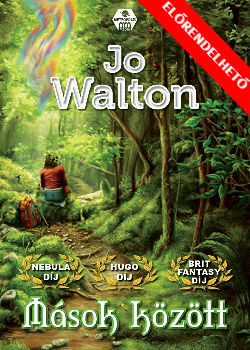What I suggest you do is arrive at Florence by train around sunset. You’ll be flying into Rome, so that’s easy to arrange — the train from the airport takes you to Termini, the same railway station where you’ll get the train to Florence, and there are trains all the time so you can quite easily time it right. The advantage of this is that you’ll see the city for the first time as dusk is falling, and you’ll walk past the Duomo and the Baptistry and should get to the Palazzo Vecchio just as the sky turns that amazing Mediterranean night-blue that you see in Books of Hours, and all the glass in the windows turns that same colour. You’ll see it every night, of course, but it’s important to see it early.
If you’re not lucky enough to be staying with Thrud in her apartment at the top of a twelfth century tower parallel with the bells of the Duomo, you’ll want to find a hotel that’s as central as possible. In any case, dump your bags and keep walking, walk across the Ponte Vecchio and have dinner at the Trattoria Bordino. Have the truffle pasta. Have the Florentine steak — it’s a huge piece of excellent steak, cooked like seared tuna, so that the outside is well done and the centre is rare and as you eat it you have steak in all its forms. The other really good place to eat on that side of the river is Gusta Osteria — it’s cheaper, and the food is also wonderful — truffle pasta, again, and cheese with honey, and crostini.They also have their own wine made with their own grapes. The food in Florence is just unbelievably great.
After dinner you can walk back over the Ponte Vecchio, saying hello to the bust of Cellini and admiring the closed gold shops, and back past the Palazzo Vecchio. Have a gelato before bed — go to the absolutely awesome Perche No! near Orsan Michele. You can eat it sitting on the steps opposite Doubting Thomas or walk back and eat it in the piazza looking at the Palazzo Vecchio, but it will be too late to watch the sky darkening by then. You can do that on the other nights, looking for the first star that dares to shine on Florence.
The thing about Florence is that it’s all of a piece. It’s beautiful, and it’s all medieval and Renaissance. There’s Etruscan stuff, but nothing really Roman, and nothing post-Renaissance either, because at the time when normal people were knocking things down to build eighteenth and nineteenth century buildings, Florence was already a highlight of Grand Tours and inspiring those buildings. The newer stuff is all outside the old city walls. Inside the old walls (which aren’t there any more, although the gates are) it’s all walkable, and there are hardly any cars. There are two street numbering systems, based on whether the building was commercial or residential in the sixteenth century. This is confusing, especially as they may not be the same now — zoning never works — but it’s traditional. All the buildings, the little shops, the hotels, the restaurants, the houses, are Renaissance or earlier. If you’re used to seeing ruined castles and abbeys, although you know they’ve been ruined by Cromwell and the Reformation you subconsciously think they’ve been ruined by time. They haven’t. They just haven’t been kept up. Florence has all the hallmarks of medieval stone architecture, but it’s been constantly lived in. If they abandoned it the roofs would fail and plants would eat the mortar and it would all fall down, but then so would your house, and probably considerably faster. It’s weird to walk into a pizza place that’s clearly barrel vaulted, but you get used to it. It’s all that old. The Uffizi and the churches you have come to see are the newest things here. Italy has never been conquered by people who didn’t secretly admire it. This shows.
Thrud’s a Renaissance woman. She’s spending a year in Florence to do research on Marsilio Ficino, the translator of Plato and one of the people who helped kickstart the Renaissance. (I love the expression on Florentine’s faces when she tells them she’s there to work on Ficino. They smile a little private delighted smile.) She’s a Renaissance woman in the other sense too, as well as publishing academic works she has written novels, she writes, sings, and performs music, she paints frescos, makes clothes. She’s one of the coolest people I know, and I know a lot of cool people. She’s the perfect person for me to be with in Florence, because she knows so much about it and because her mind meshes so well with mine. We spent a week having a great conversation about art and history and allegory and beauty and philosophy. You know the way really good conversation bounces? Nothing is more interesting than good conversation.
The patrons of Florence are Mars, John the Baptist and St Zenobius, and the symbols of Florence are David and the River Arno. (Can’t you imagine them arguing at committee meetings?) The language of Florence is a very Latinate Italian, extremely easy to read and fairly easy to understand once you have the rhythm of it but very hard to predict — I kept coming out with things that were half Latin and half French. Many people speak English, but then again wouldn’t you if addressed in half Latin and half French? With my language talents, it’s just as well that I was born speaking everyone’s second language.
Florence was never really feudal. After the Guelphs and the Ghibellines had finally sorted things out, the Ghibellines houses were flattened to make the space where the Palazzo Vecchio is, and the piazza in front of it, and the sculpture gallery to the side of it, where Michaelangelo’s David was made to stand (and a perfect copy stands still) and where Cellini’s Perseus holds Medusa’s head high and his sword ever ready. The Palazzo Vecchio is where the Florentine Republic (1115-1512) ran its government by the completely mad method of chosing names of eligible men from leather bags and shutting them up in the castle for two months with complete power, to be replaced by another eight men for the next two months. Meanwhile they hired a Podesta for a year, a younger son of a noble from elsewhere, who worked to run the police for the city and lived in the Bargello (now a lovely museum) and at the end of the year was exiled from Florence forever. The idea was to prevent tyranny. It’s crazy and it couldn’t possibly work and eventually (1434) it got taken over by the Medicis behind the scenes and then Savonarola (1494) and then (1512) the Medicis again as Grand Dukes of Tuscany. (But meanwhile it’s 2011, how well are your institutions doing at repelling tyranny?) You can go in and see Macchiavelli’s office, which they keep kind of quarantined. There are wonderful doors with portraits of Dante and Petrarch.
In the Pitti Palace, which was built by the Medici dukes, there’s a room that shows the decline and rebirth of the ancient world. There’s a fresco showing the ancient world being destroyed by a set of rather mythologically mixed monsters (harpies eating Pegasus) and one showing Lorenzo de’ Medici welcoming refugee muses to Florence, and another of him surrounded by sculptuors and artists and Ficino, with an inset in which Truth is dispelling any doubts Lorenzo might have about the reconcilation of the pagan world with the bible. The last panel shows a swan drawing a medal of Lorenzo out of the water, but in the corner are the fates, spinning and weaving and cutting as always, and that wall connects on to the wall where time and monsters are destroying civilization and everyone is weeping over the lost books.
I had the reaction to that room that people are supposed to have to religious paintings — a great affirmation of my heart’s belief, and the recognition that other people have felt the same. I am only moved by religious art by an effort of imagination.
There was a lot wrong with the ancient world, and there was a lot that was ridiculous in the Renaissance view of it. But there are ways in which the Renaissance dream of Classical Antiquity is better than actual Classical Antiquity, because it leaves out the slavery and the armies and the injustice. It’s all about the art and learning. We too can look at history and keep the best of it while deploring the awful things. The Renaissance truly flowered in Florence, and while you’re there you can see work by Botticelli and Raphael and Michaelangelo and Leonardo and Cellini and Galileo and Donatello. You can see the Baptistry, with the mosaic of hell that Dante would have seen as a boy, with the doors Ghiberti designed — and in between doing the designs and doing the doors, Brunelleschi invented linear perspective, so the model doesn’t have it and the real doors do. You can see the neoclassical San Lorenzo that leads you to think about the soul of Cosimo de Medici, and the monastery of San Marco where every monk’s cell has an individual fresco by Fra Angelico. You can see the Duomo, which they started building in the confident hope that somebody would figure out how to build a dome that big before they got to it. (Brunelleschi did.) You can go to the Uffizi, which is a world class art gallery. (I suggest you become a friend of the Uffizi to avoid the queues. The membership also gets you in free to most of the other places you will want to go, and the Uffizi itself is too big to see in one day. You may well save money, and you’ll certainly save time, and if you end up spending a few extra Euros they will go for the preservation of art treasures, which is still a win.)
Best of all, everywhere in Florence you can see the physical evidence of a time and place where people were passionately excited and making things and inspiring each other and competing to make better things. They were rediscovering the works of antiquity and not just imitating them but surpassing them. They were just starting to discover science — you can see Galileo’s telescope, and Leonardo’s machines — and experimenting and learning and caring.
Right next to San Lorenzo, you can see the Laurentian Library, which at the time it was built held all of Western knowledge neatly laid out on reading shelves and lecterns designed by Michaelangelo. All the knowledge they were aware of would fit into that room, absolutely everything. Then after that there was a time when it wouldn’t all fit in even the biggest room in the world, and right now it all fits into your phone. What a wonderful modern age we live in! Florence doesn’t just tell you that people there had a Renaissance once. It shows you that having a Renaissance is a possible thing to reach for. So what I suggest is that when you come home from Florence we start to make things and show them to each other and have another Renaissance, starting here and now. OK?



